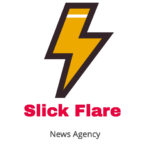Create a Mining Resume That Works (With a Template and Example)
You may effectively communicate your talents, experience, and credentials in your resume while applying for employment in the mining sector by using an elegant resume. Throughout the application process, hiring managers scan a lot of resumes, so it’s important to make sure your CV presents the necessary information in an understandable manner. When applying for employment, it helps to know how to construct an effective CV and what kind of material would best highlight your application. This post includes a template and sample resume for a mining job application, as well as instructions on how to build a strong mining resume and some useful advice.
Read More: mining resume examples
Tips for crafting a strong mining resume
When creating a mining resume, you may follow these helpful tips to make sure your most essential information is presented in an efficient manner:
1. Provide your contact and identity details in a header
Put your contact and identity information at the top of your resume to make it easier for hiring managers to access it later. Recruiters can interact with you and your resume and cover letter more quickly and easily if your contact information is clear. Offering many channels of communication is beneficial in the event that they choose to extend an invitation for a meeting or extend a job offer. At the top of the page, write your complete name. Below that, put your phone number, email address, city, and province or territory of residency.
2. Compose a succinct, expert overview.
Next, compose a succinct opening paragraph that highlights your mining background, competencies, and noteworthy accomplishments. If you’re still in the early phases of your profession, you can include any significant achievements you’ve made in your mining career, including finishing an apprenticeship. You can list any significant requirements—like the certificate from the Canadian Mining Certification Program—that are listed in the mining job description here. You should limit your professional overview to two or three sentences. Hiring managers will find it simpler to read and retain the material of your professional overview if it is written in a clear and succinct manner.
3. Enumerate your prior employment history.
Provide a list of your two most recent mining positions in the next column. List these jobs in reverse chronological order, starting with the one you have held most recently. Put your job title and the dates of employment in the beginning of your writing. Next, provide the business’s name and address. Under your most recent or current employment, you can state five of your primary responsibilities; under your previous positions, you can include three. You may, for instance, describe how you operate jumbo drills or your explosives experience, along with any pertinent facts.
4. Create a list of your hard and soft abilities.
It’s crucial to communicate your mining talents in the skills section. This is where you may enumerate the hard and soft abilities that not only make you a competent miner but also a trustworthy worker. Hard skills are the abilities—like drilling, operating a vehicle, or blasting—that you have acquired through courses like the Canadian Mining Certification Program. Transferable talents like communication and personal organization are known as soft skills.
5. Describe your noteworthy educational experience.
You can add any secondary or tertiary qualifications that you feel will help you in your mining profession in this area. Hiring managers may take into account your application only if you have finished a specific high school course. Put the institution’s name, address, and the accreditation’s title in writing.
6. Add any applicable mining certificates.
You can include your most significant mining core training certifications here. This might include your CMCP certification as well as any additional certifications needed to operate machinery like scoop trams or rock bolts. Note the certification name, the host organization’s title, and the completion or expiration date of each.
7. Before submitting, proofread your resume.
It is imperative that your resume be submitted without any mistakes in spelling, writing, or punctuation. Having a flawless CV demonstrates that you respect the chance and have taken the effort to create a professional document. Online spell and grammar checkers are a useful tool for identifying errors.
Mining advice on writing resumes
The following are some helpful pointers to help you write a better resume:
Be careful and succinct when adding information to your CV.
Hiring managers may find it simpler to locate the information they need on concise resumes. To maintain the reader’s interest and enhance the readability of your text, just include the most important information. This can also aid in improving the memorability of your resume’s key material.
Give quantifiable numbers as illustrations.
When giving examples on your CV, use quantifiable numbers to assist hiring managers grasp the breadth and significance of your work. For instance, you may state that you drove a 20,000-gallon tank truck for the purpose of hauling wastewater from drill sites during a two-week period, rather than stating that you transported wastewater from drill sites. The reader may better understand and apply your knowledge to their operations with the aid of these facts.
Look for keywords in the job description.
Hiring managers may specify the precise talents they are looking for in candidates when creating a job post. When feasible, use these keywords on your resume to help it meet search engine requirements. It also demonstrates that you thoroughly comprehend the requirements of the position.
